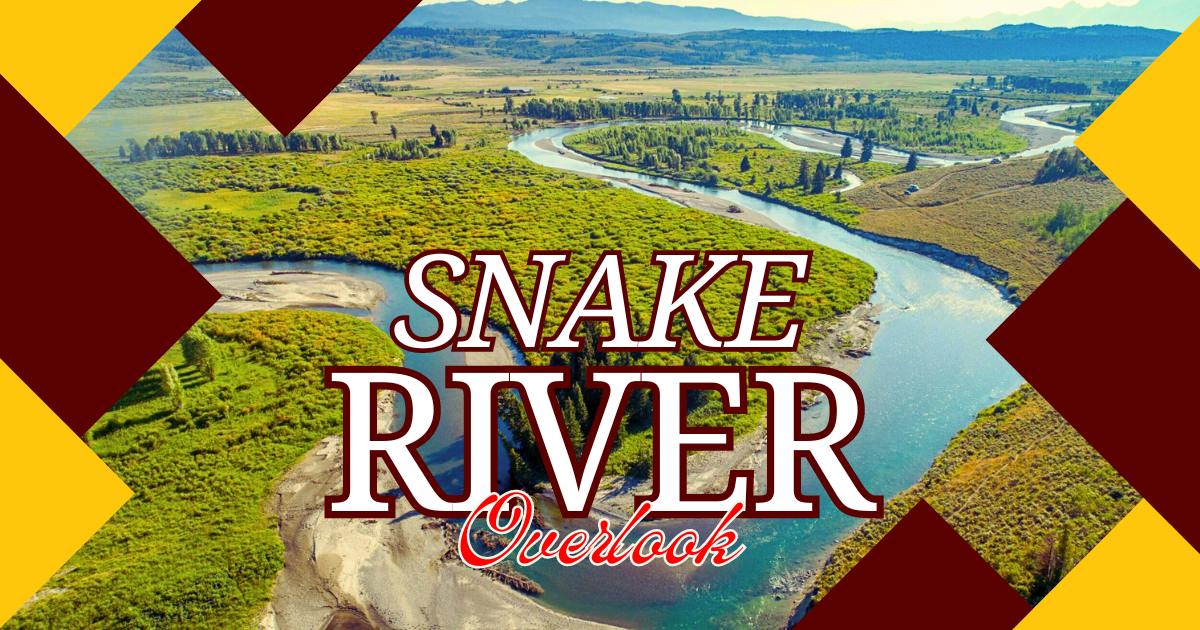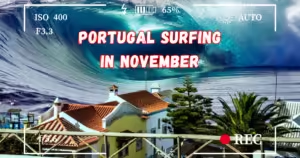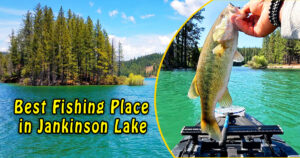Nestled in the heart of Grand Teton National Park, the Snake River Overlook is one of the most iconic scenic viewpoints in the United States. With breathtaking views of the winding Snake River framed by the majestic Teton Range, this overlook offers visitors an unforgettable glimpse into the beauty of the American West. Whether you’re a nature lover, photographer, or adventurer, Snake River Overlook is a must-see destination that promises awe-inspiring landscapes.
Originally made famous by Ansel Adams’ iconic black-and-white photograph in 1942, Snake River Overlook continues to attract travelers from around the globe. In this guide, we’ll cover the 7 compelling reasons why this scenic gem should be on your travel bucket list, from the history and the best times to visit to tips for capturing that perfect shot. Whether you’re planning a road trip or simply looking for your next outdoor adventure, Snake River Overlook is a place you won’t want to miss.
History of Snake River Overlook: A Glimpse Into the Past
The Snake River Overlook is more than just a beautiful viewpoint—it’s a significant piece of American history. The overlook became world-famous in 1942 when legendary photographer Ansel Adams captured an iconic image of the Snake River winding through the valley with the Tetons towering in the background. This photograph, part of a series commissioned by the U.S. government, helped bring attention to the conservation of America’s natural landscapes.
Ansel Adams and the Famous Photo
Ansel Adams’ photograph of Snake River Overlook not only solidified his place in history as one of the greatest landscape photographers but also helped raise awareness about the need to preserve natural areas like Grand Teton National Park. His photograph, with its dramatic contrasts and sweeping view of the Snake River and the mountains, has inspired countless travelers and photographers to visit the overlook to see the beauty for themselves.
Grand Teton National Park’s Role
Today, Grand Teton National Park is one of the most visited national parks in the U.S., and Snake River Overlook remains a key highlight for visitors. Whether you’re a history buff, photography enthusiast, or someone who simply enjoys stunning views, knowing the historical significance of this spot adds another layer of appreciation when you stand at the edge of the overlook, gazing at the same landscape Adams once immortalized.
Best Time to Visit Snake River Overlook: Sunrise, Sunset, and Everything in Between
When it comes to capturing the full beauty of Snake River Overlook, timing is everything. The lighting throughout the day can drastically change the mood of the landscape, and whether you’re a casual observer or a photographer, knowing the best times to visit can enhance your experience.
1. Sunrise at Snake River Overlook
One of the most magical times to visit Snake River Overlook is at sunrise. As the sun rises behind the Teton Range, the morning light casts a warm glow on the mountains, creating the perfect backdrop for photography. Early risers are often rewarded with fewer crowds, peaceful silence, and the soft hues of dawn.
- Pro tip: Arrive at least 30 minutes before sunrise to set up your camera or find the perfect spot for viewing.
2. Sunset at Snake River Overlook
While sunrise offers beautiful lighting, sunset is another popular time to visit the overlook. During the late afternoon and evening, the setting sun casts a dramatic light on the Tetons and Snake River, often creating vibrant oranges, pinks, and purples in the sky. Sunset visits are perfect for those who want to avoid the early morning chill but still want to capture the magic of the changing light.
- Pro tip: Check the local sunset time and arrive an hour before to secure your spot, as sunset is a favorite time for many visitors.
3. Midday Viewing
If you’re unable to visit during sunrise or sunset, don’t worry—the view from Snake River Overlook is spectacular at any time of day. During the midday hours, the light is brighter, which allows for clearer views of the distant mountains and Snake River. This is also a great time for wildlife spotting, as animals are often active in the area around noon.
No matter when you choose to visit, you’ll be treated to panoramic views that are sure to take your breath away.
How to Get to Snake River Overlook: Directions and Travel Tips
The Snake River Overlook is conveniently located along the Teton Park Road in Grand Teton National Park. While it’s an easily accessible stop for most visitors, planning ahead will ensure you have a smooth journey to the overlook.
1. From Jackson Hole
Snake River Overlook is just a 30-minute drive from the town of Jackson Hole, Wyoming. Head north on U.S. Highway 191/89/26, which runs through Grand Teton National Park. Keep an eye out for the Teton Park Road turnoff, and follow the signs for Snake River Overlook.
2. From Yellowstone National Park
For those coming from Yellowstone National Park, Snake River Overlook is a bit further but still an easy drive. It takes about 1.5 to 2 hours to reach the overlook from Yellowstone’s south entrance, making it a great stop on your way through the parks.
3. Travel Tips
- Arrive Early: If you’re visiting during peak seasons, like summer or fall, arriving early will help you avoid crowds and ensure you get a good parking spot.
- Bring Layers: Even in summer, the mornings and evenings can be chilly, especially at higher elevations. Pack layers to stay comfortable.
- Park Entry Fees: Remember that Grand Teton National Park has an entry fee, so plan to purchase your park pass in advance to save time.
Photography at Snake River Overlook: Capturing the Perfect Shot
One of the main reasons people flock to Snake River Overlook is the opportunity to take incredible photographs. Whether you’re a professional photographer or just capturing memories with your smartphone, here are some tips to help you get the perfect shot.
1. Best Camera Settings for Landscape Photography
For those using a DSLR or mirrorless camera, consider these settings to capture the stunning landscape:
- Aperture: Use a higher aperture (f/8 – f/16) to keep both the mountains and river in sharp focus.
- Shutter Speed: For sunrise and sunset shots, a longer exposure will allow you to capture the soft glow of the light, but make sure to bring a tripod to avoid blurry images.
- ISO: Keep your ISO as low as possible (ISO 100-200) to minimize noise and capture crisp, clear images.
2. Best Angles and Framing Tips
When photographing Snake River Overlook, it’s important to frame your shot to capture both the Snake River winding through the foreground and the Teton Range in the background. For an Ansel Adams-inspired shot, position yourself on the edge of the overlook, using the curves of the river to lead the viewer’s eye through the image.
- Pro tip: If you’re visiting during the fall, you’ll be treated to beautiful fall foliage that can add even more color and texture to your shot.
3. Avoiding Crowds in Your Photos
To avoid having other visitors in your shot, plan to arrive at off-peak hours like sunrise or mid-afternoon on weekdays. Alternatively, consider using photo editing software to remove any distracting elements after you’ve taken your shots.
What to See and Do at Snake River Overlook
While Snake River Overlook itself is a destination worth visiting, there’s plenty to do and see in the surrounding area. Whether you’re looking for hiking trails, wildlife viewing, or scenic drives, this part of Grand Teton National Park offers a wealth of outdoor activities.
1. Hiking Trails Nearby
If you’re eager to explore the park on foot, there are several nearby hiking trails that offer more stunning views of the Snake River and the Tetons. The Hermitage Point Trail and Taggart Lake Trail are popular options for those seeking a moderate hike with rewarding scenery.
2. Wildlife Spotting
The area around Snake River Overlook is home to a variety of wildlife, including elk, moose, bald eagles, and even bears. Bring binoculars for a better chance of spotting animals from a safe distance, especially during the early morning or late afternoon when wildlife is most active.
3. Scenic Drives
If you prefer to take in the beauty of Grand Teton National Park from the comfort of your car, there are plenty of scenic drives to enjoy. The Teton Park Road and the Signal Mountain Summit Road offer breathtaking views and make for a perfect road trip stop.
Planning a rejuvenating escape? Don’t miss 7 Powerful Reasons to Visit English Town Mineral Springs, your perfect natural healing retreat! Check it out here!
Conclusion: Why Snake River Overlook is a Must-See Scenic Gem
In the realm of natural beauty and iconic landscapes, Snake River Overlook stands out as a must-see destination for anyone visiting Grand Teton National Park. Whether you’re drawn to the area for its historical significance, its potential for incredible photography, or simply the chance to take in one of the most awe-inspiring views in the country, Snake River Overlook will not disappoint.
From Ansel Adams’ famous photo to the breathtaking vistas of the Teton Range, this overlook is a place where nature, history, and artistry converge. So, make sure to add Snake River Overlook to your travel itinerary, and be prepared for an experience that will leave you in awe of the natural world.
FAQs About Snake River Overlook
- Where is Snake River Overlook located?
- Snake River Overlook is located in Grand Teton National Park, Wyoming, along the Teton Park Road.
- What is the best time to visit Snake River Overlook?
- Sunrise and sunset are the best times for capturing the most beautiful lighting and views of the Teton Range and Snake River.
- Is Snake River Overlook accessible year-round?
- Yes, the overlook is open year-round, but road conditions may vary during the winter months, so check for any closures.
- Can I take professional photos at Snake River Overlook?
- Absolutely! The overlook is a popular spot for landscape photographers, and professional cameras are allowed.
- Is there parking available at Snake River Overlook?
- Yes, there is a parking lot at the overlook, but it can fill up during peak tourist seasons.
- Are there hiking trails near Snake River Overlook?
- Yes, there are several hiking trails nearby, including Taggart Lake Trail and Hermitage Point Trail.
- Is Snake River Overlook wheelchair accessible?
- Yes, the overlook is wheelchair accessible, with paved paths leading to the viewpoint.
- Do I need a park pass to visit Snake River Overlook?
- Yes, since Snake River Overlook is within Grand Teton National Park, you will need a park pass to enter.
- Can I visit Snake River Overlook during winter?
- Yes, but be sure to check road conditions, as snow and ice can make travel more challenging.
- What wildlife can I see near Snake River Overlook?
- The area is home to elk, moose, eagles, and other wildlife, which are often spotted near the overlook.

Joseph Bush is a seasoned writer and researcher with over 7 years of experience covering a wide range of general topics, from lifestyle and technology to business and current events. He is dedicated to producing fact-checked, reader-friendly content that informs, engages, and empowers readers.
Throughout his career, Joseph has followed strict editorial guidelines, relied on reputable sources, and ensured every article meets the highest standards of accuracy and clarity. His expertise spans multiple fields, allowing him to explain complex topics in a way that’s easy to understand.
Passionate about continuous learning, Joseph stays updated on industry trends and best practices to deliver trustworthy, well-rounded insights. Readers can rely on his work for its credibility, depth, and real-world relevance.




